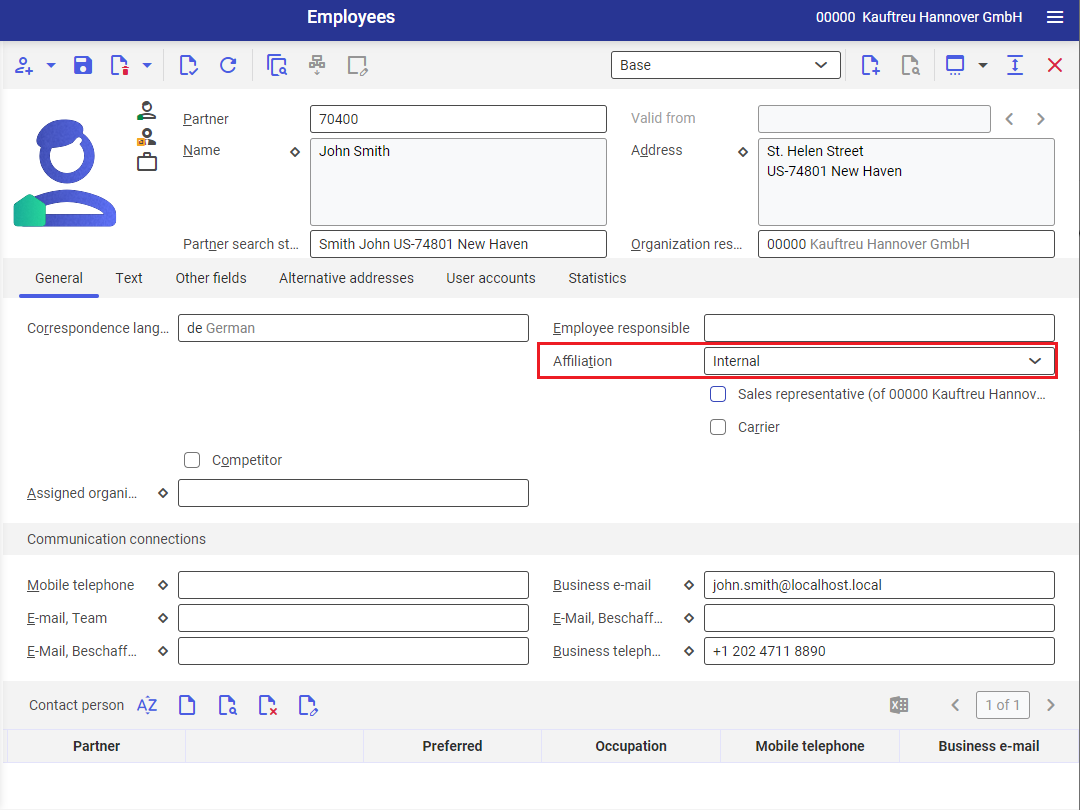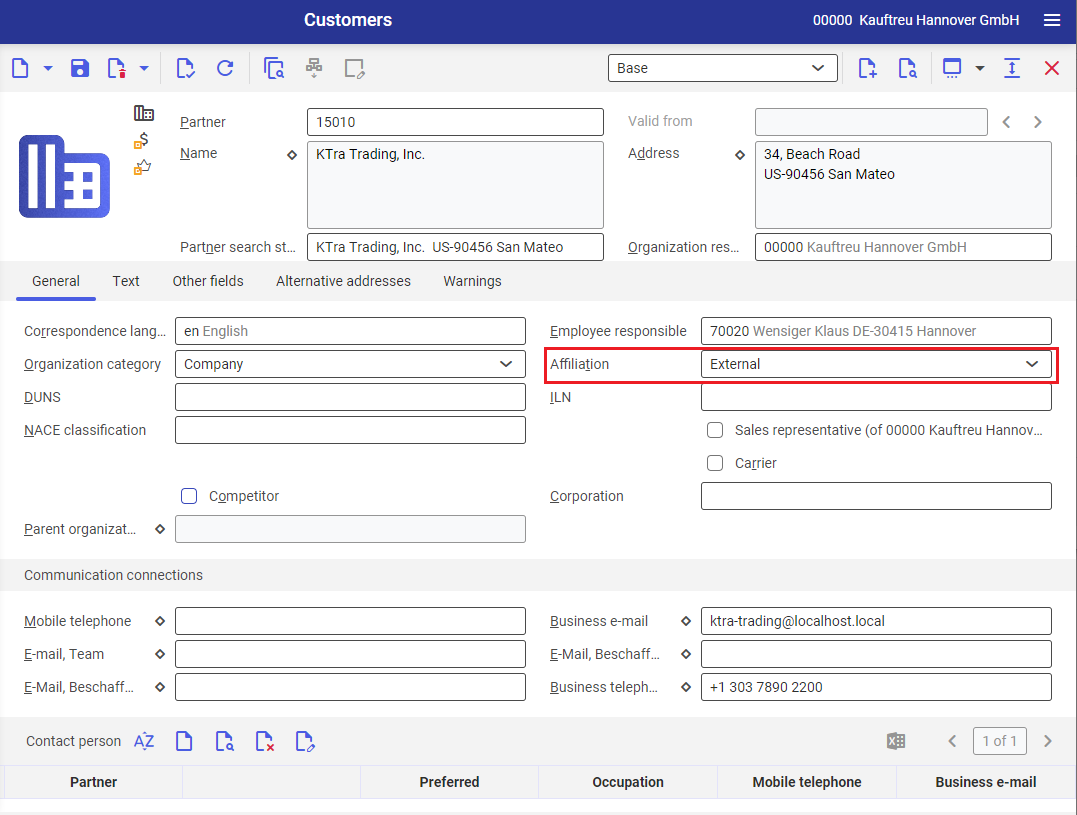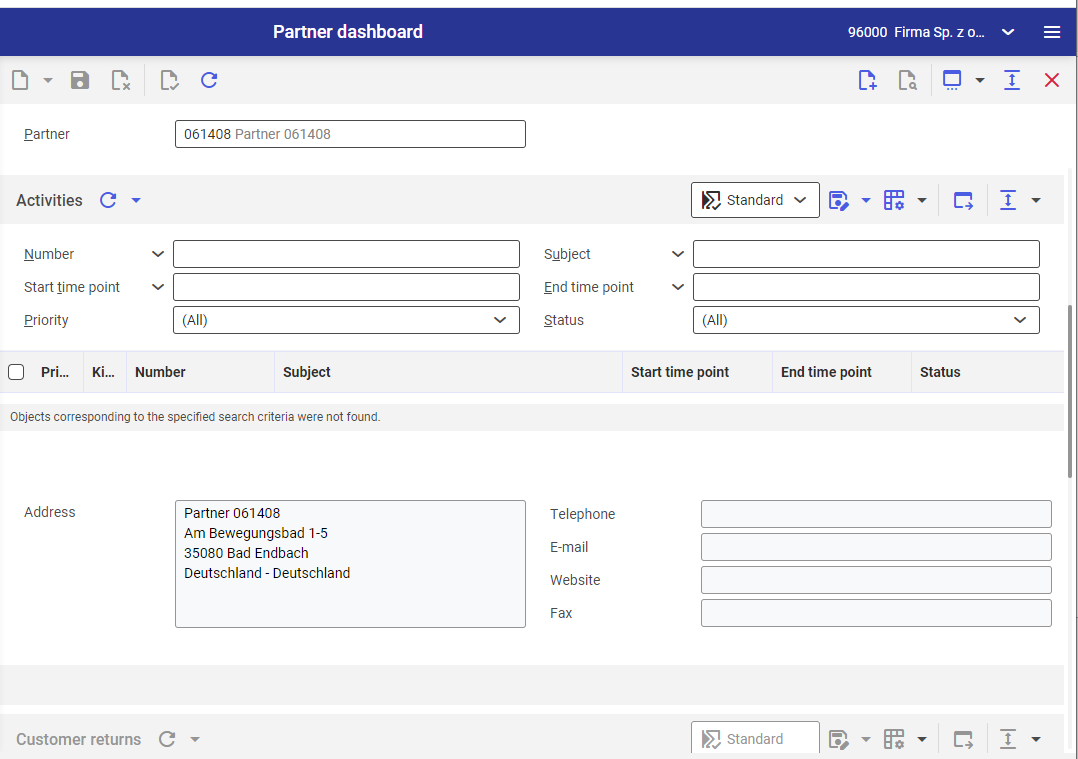Topic overview
This article describes how to define partner details and contains instructions on how to import and reorganize partners.
All persons and organizations are presented as partners, regardless of whether they participate in business transactions as customer, supplier or in another role. Partner data are created and saved in the Partners application.
Master data presented on partner form can vary depending on the partner role (customer, supplier). In a multi-site environment, the master data can also vary by organization.
More information about the Partners application can be found under Partners.
Definitions
A partner is a natural person or an organization. A partner can be in a relationship with its home company (i.e., the client company of the OLTP database currently being used) and also with other partners. One partner can thus appear in different partner roles and in different business processes.
The following partners exist in the system:
- internal – employees

- external – customers, suppliers, employees

Partner master data
Each partner has data that describe the partner and determine the partner’s role in other system frameworks.
The master data can be added in the following applications:
- Suppliers
- Customers
- Employees
- Organizations
- Customizing
Salutations
A salutation is part of contact information and used mainly in written communication, such as mail-merge letters. A salutation can be added in the Salutations application and then used in the Partners application.
Titles
A title is part of a person’s contact information and extends the partner name. It can be added in the Titles application an then used in the Partners application. Academic titles are such exemplary titles.
Occupations
Occupations provide business activity information, e.g., store manager, executive director etc. They can be added in the Occupations application an then used in the Partners application.
Communication connections
Communication and correspondence with a partner can be handled in several ways, such as via business phone, fax, e-mail. Communication connections can be added in the Communication methods application an then used in the Partners application.
Partner relationship categories
Partners are natural persons (individuals) or organizations (companies). They have internal relationships within one company, as well as mutual external relationships.
Specific partner relationships are created by assigning partners to business roles via other partners. To be able to map them uniformly, the predefined partner relationship categories are used. It is possible to define any number of partner relationship categories. They are always defined in a targeted manner, i.e., from the point of view of the partner with whom a relationship category is registered.
Partner templates
The option of uploading partners from a partner template help add partners to the system without completing manually the fields on the partner form. This way, the partner data specified in the partner template is completed automatically as default values.
Using partner master data in organizational structures
If permissions related to the application content are used in an OLTP database, there are then several organizations whose item master data can be defined individually.
Searching for partners
Partner information can be searched for in the following applications:
- Cockpit: Partners
- Cockpit: Customers
- Cockpit: Suppliers
- Cockpit: Marketing partners
- Partner dashboard – contains information on the selected partner. Data in this application are not modifiable. The application interface can be customized to the user’s needs.

Importing partners
The following can be imported into the system:
- partners
- partner templates
Reorganizing partners
The partner master data that have not been used or will no longer be used can be reorganized. Reorganization deletes permanently the objects marked for deletion from the system.
For this purpose, a deletion marker has to be added to objects. The system then verifies whether their master data can be deleted.
